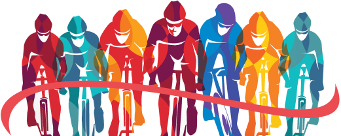Milano San Remo in 1 figure
Milan San Remo is the longest one-day race on the UCI calendar. Because the stage is largely flat it is known as a sprinters classic, despite the fact that the parcours does have some climbs. In general the length of the stage and intermediate obstacles thin out the field considerably and the final sprint is frequently between a severely reduced ‘peloton’.
In Figure 1 you can find an interactive plot with the Milan San Remo results since 2008. Let’s start with the axes of the figures. The vertical axis contains the time difference compared to the Milan San Remo winner. The winner, of course, arrives with a time difference of zero. All time differences are scaled with a square root, so you can properly see the small time differences close to the winner and large time differences, higher up the axis, don’t take up that much space. The horizontal axis contains the race years from 2008 up to 2018.
Then we have dots. Actually, many of them. Each dot represents a ‘bunch’ of riders that finished at the same time. The size of the dot corresponds to the amount of riders in the ‘bunch’. Take for example the small dot at 2017. In that dot are three riders: Kwiatkowski, Sagan, Alaphilippe. The dots in 2016 and 2018 contain 31 and 19 riders, respectively.
Then we have the colors of the dots. A red dot means that this group of riders belongs to the first 10 groups of riders that reached the finish. After the 10th group the dots get coloured blue. Not all blue dot’s are displayed, the blue dots that finish within 5 minutes of the winner are left out. The black dots represent the riders that did not make it to the finish for whatever reason (time limit, crash, etc). All dots should be interactive. You can hover over them with your mouse and see which riders finished within that dot and the ranking of the riders. It may be a bit more complicated to get the dots to work properly on a phone.
Figure 1: Milan San Remo time differences since 2008
The figure is pretty cool and some observations are:
- 2008 was the only year without a sprint. Fabian Cancellara reached the finish alone. The field after that was quite compact.
- In 2009 and 2013 you only see red dots within 5 minuts of the winner. In 2009 there are 64 riders that finish within 5 minuts of the winner, in 2013 just 51.
- The biggest sprint takes place in 2017, 31 riders finish at the same time.
- 2015 has the most riders that finished within 5 minutes of the winner: 100 in total.
- The gap to the second group of riders is largest in 2014: 14 seconds.
- 2014 was a true battlefield, 86 riders did not make it to the finish. A huge difference compared to the 5 dropouts in 2017.
If you have other suggestions don’t hesitate to send us a message on Twitter or email.

